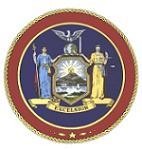
Governor Cuomo Announces Results From Latest Round of Crude Oil Rail Inspections
NYSDOT, FRA Inspectors Examine Rail Cars and Facilities, Including CSX Track between Buffalo and Syracuse
Since this targeted inspection campaign began in New York in February, the State and its federal partners have inspected more than 6,300 rail cars (including 4,292 DOT-111 crude oil tank cars) and 2,200 miles of track, uncovered 658 defects, and issued 9 hazardous materials violations.
“This administration is continuing an aggressive inspection of rail yards and tracks across the state in order to protect our communities and avoid a potentially disastrous crude oil accident,” Governor Cuomo said. “This latest round of inspections has resulted in many necessary improvements and repairs to help ensure that New Yorkers are protected from the possibility of a derailment or other serious accident.”
On Wednesday September 24, inspection teams from the New York State Department of Transportation (NYSDOT) and the Federal Railroad Administration (FRA) carried out track and crude oil tanker inspections at the CSX Corporation-owned Frontier Rail Yard in Buffalo and the Canadian Pacific Railway-owned Kenwood Rail Yard in Albany. The two yards are the main rail hubs for crude oil transport in New York State. The inspectors also examined the CSX mainline track between Buffalo and Syracuse.
The inspections focused on track, track hardware and tank car mechanical safety equipment, including wheels and brakes. The teams also performed hazardous materials inspections to ensure that equipment is in line with regulations, including valves, valve closures, and placards that describe the cargo being shipped. They also checked tank car inspection and pressure test dates. A split rail, worn train car brakes and loose or missing bolts were among the defects identified.
NYSDOT Commissioner Joan McDonald said, “At Governor Cuomo’s direction, we continue to work with our federal partners on these coordinated inspection blitzes, targeting rail yards and sections of track where the shipment of crude oil by rail has increased dramatically. NYSDOT is committed to ensuring that public safety is not compromised.”
CSX Mainline Track Inspection – Buffalo to Syracuse
NYSDOT and FRA track inspectors examined approximately 167 miles of track and 46 switches along the CSX mainline from Buffalo to Syracuse. The inspectors found a split rail, which is a critical defect, resulting in a speed limit reduction to 30 miles per hour, pending the rail’s replacement. The inspectors also found 38 non-critical defects, including muddy ballast and loose bolts. All non-critical rail defects must be repaired within 30 days.
Albany
At the Kenwood Rail Yard in Albany, rail equipment inspectors examined 202 DOT-111 crude oil tank cars and found 12 non-critical defects, including 7 worn brake shoes, four defective wheels, and one missing knuckle pin.
FRA hazardous materials inspectors examined 317 DOT-111 crude oil tank cars and found one non-critical defect for an obstruction left on a tank car platform, which was immediately removed.
Buffalo
At the Frontier Rail Yard in Buffalo, rail equipment inspectors examined 102 DOT-111 crude oil tank cars and found 10 non-critical defects, including 2 worn brake shoes, a missing knuckle pin, 3 deflector shields with loose bolts and 4 damaged coupler tabs.
The FRA inspected 145 DOT-111 crude oil tank cars for hazardous materials defects and found 11 non-critical defects, including 10 loose or missing placards and debris on one tank car platform.
Non-critical tank car defects must be fixed before the train departs the yard. If that is not possible, the affected car will be pulled from the train to await repair.
A series of out-of-state disasters involving the rail transport of crude oil from the Bakken oil fields centered in North Dakota have raised concerns about the safety of the communities through which this petroleum product is shipped. One incident killed 47 people and destroyed part of the town of Lac-Megantic, Quebec. Oil transport trains travel through 22 New York State counties, including the cities of Buffalo, Syracuse, Utica, Albany and Plattsburgh.
Governor Cuomo in January issued an Executive Order directing five state agencies to undertake a comprehensive review of safety procedures and emergency response. Since that time the State has taken aggressive action, including:
- Urged federal authorities to revise design specifications and expedite the phase-out of older, unsafe rails cars; implement more stringent standards to test crude oil; and review the routing of crude oil to ensure the most appropriate routes;
- Initiated an enforcement and inspection effort to better protect communities from the derailment of trains carrying crude oil;
- Issued fines to companies that fail to comply with state regulations related to derailments; and
- Called on federal authorities to expedite and strengthen rail safety standards and increase inspections.
In addition, the Governor on April 30 issued a letter to the White House calling for immediate federal action to strengthen national standards and regulation of crude oil transport. He also unveiled a report that detailed ten recommendations and presented a package of state administrative, regulatory and legislation actions regarding crude oil transportation. Some of these actions include: Expanding the railroad inspection program; partnering with federal authorities in updating environmental response plans and spill preparedness; and developing a comprehensive response asset database and a tiered response asset network to improve preparedness.
State and emergency response officials have participated in more than two dozen training exercises this year to better prepare our communities for potential crude oil disasters.
